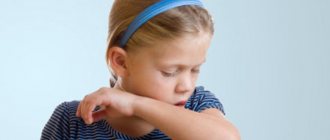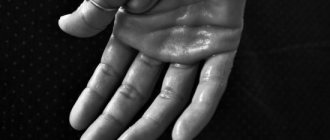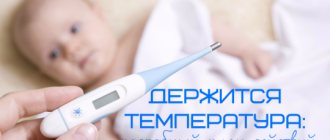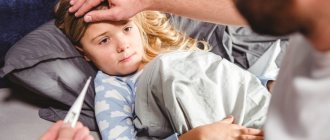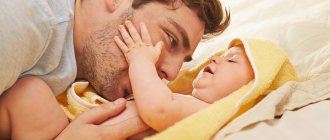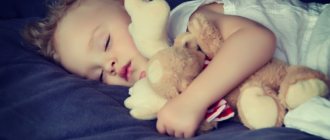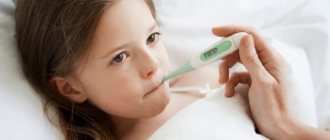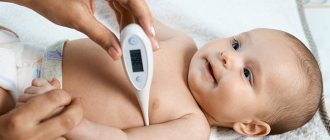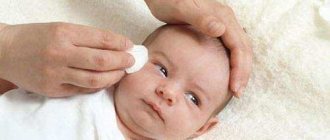A child suffering from autism lives in his own world; he poorly understands and perceives the events happening around him. An autistic person avoids communicating with people, including parents, and may not respond to speech addressed to him, which often makes one suspect that these children have hearing impairment. Despite many “oddities,” an autistic child can be highly intelligent and even show genius abilities in some area. He can become a wonderful musician, artist, scientist, etc. At the same time, the same child may not have the simplest everyday and social skills.
How autism manifests itself in a child: features of communication between an autistic person and others
An autistic child can be born into any family. In this case, the social status, welfare and education of the parents does not play any role. There is no one to blame for the fact that an unusual child appears in the family. Autism is considered a congenital condition or disease. In the scientific world, heated discussions are still ongoing on the topic: is autism a disease or a disorder? However, controversial opponents are unanimous in the opinion that autism is a pathology that needs to be treated.
As a rule, immediately after birth it is almost impossible to determine the symptoms of the disease. A little later, after the children have developed certain skills, parents notice some distortion in the perception of the world around them and deviations in the child’s behavior. Differentiating the symptoms of autism is quite difficult, as they are individual and unique.
Autistic behavior in society
- The first signs of autism are considered to be: lack of social skills .
- Some children give the impression of being deaf because they do not speak and sometimes do not respond to speech addressed to them .
- Babies become attached to certain external objects . In some forms of this disorder, up to a certain age the child develops absolutely normally, but then gradually loses the acquired skills
- Search for solitude , desire to be alone. The search for loneliness is a symptom that persists in such a child for life.
- An autistic child constantly averts his eyes , avoiding eye contact even with close people.
One of these signs cannot be used to diagnose autistic disorder. This diagnosis is made based on a combination of several symptoms. Special tests help identify autism in children under 6 years of age.
Statistics say that out of every thousand, one child suffers from this disorder. However, there are many more autistic children, since many have a mild form of the disorder and their parents do not consult a doctor. They are sure that the child’s desire for loneliness is explained by the characteristics of his character. This disorder is more common in boys. The occurrence of pathology is not affected in any way by the behavior of family members. Therefore, it is impossible to say that the baby became autistic due to the wrong attitude of his father or mother towards him.
Causes of autism in children
Since the diagnosis is still very “young”, doctors have not yet named specific reasons for the development of autism in children, but experts pay attention to the dependence with certain factors.
Supposed causes of autism:
- age of the father (or both parents) at conception - 40+;
- presence of relatives with autism in the family;
- 7th and further child in a large family;
- tuberous sclerosis, obesity, rubella in the mother during pregnancy;
- cerebral palsy (CP), hearing or speech impairment in a child, attention deficit disorder, Rett syndrome (chromosomal disorders).
How to identify autism in a child by behavior, interests: signs
Behavioral characteristics and interests of an autistic child
- The mother lovingly addresses the baby - he remains absolutely indifferent. There is no smile on his face, he does not react in any way to his name.
- Any change in the usual way of life causes panic in the child.
- The baby does not react at all to wet clothes.
- The baby gives preference to a certain color scheme. For example, he loves only brown toys, allows himself to wear only blue clothes, etc.
- The baby never plays with peers, preferring to play with things.
- The child constantly repeats the same phrases.
- Reacts to any external sound stimuli with a noticeable delay.
- Characterized by outbursts of aggression.
- Any object is smelled.
- Loud talking causes aggression or irritation.
- The child's sense of danger is impaired.
- Autistic people may cause physical harm to themselves.
- One of the leading symptoms of this disorder is impaired communication skills. Children suffering from this disorder begin to talk much later and, as a rule, never use gestures. Some, on the contrary, knowing a lot of words, simply do not use them. They prefer to take an adult by the hand and lead them to the item they need. Older children may not notice the absence of loved ones in the house.
- An autistic person can stare at one object for hours.
- The baby loves to spin around its axis for a long time, wave its arms, and walk on tiptoe. These movements are repeated day after day.
- The goal of such a child’s game may be to simply arrange toys in one row.
The first signs of autism in a child: when do they appear?
A parent will notice the first signs of autism in a child at about 2-3 years of age. However, if you are careful, you can recognize them even in infants.
How does autism manifest in infants?
- the baby does not show animation and interest when parents appear in his field of vision;
- does not maintain eye contact with the person who is trying to communicate with him;
- the child does not smile;
- the baby either does not react at all to external stimuli (touch, light, noise), or shows too strong a reaction.
These early signs are not clear indicators of autism syndrome: they may, for example, indicate problems with hearing or vision in the child.
Therefore, symptoms of autism in children can be suspected only when their manifestations are pronounced. They can be detected first by parents who have already observed similar disorders in their older children or in one of their relatives. But young mothers and fathers who have never encountered manifestations of autism in children, as a rule, do not pay attention to deviations in the child’s development, considering them “character features.” Therefore, diagnosis of the syndrome in such families is often delayed. Autism in children is usually diagnosed at the age of 3 years. It is at this time that the symptoms of the disorder increase; they are easier to notice when the child begins to attend various clubs, sections or kindergarten. Indeed, against the background of the development of other children, the signs of autism become obvious. But even if the child does not attend any development groups, the parents of a three-year-old child themselves pay attention to the child’s lack of many skills.
In general, autism in children manifests itself as developmental disorders. However, if you begin to correct these disorders at an early age, then many of the child’s skills and abilities can be developed. This means that the baby will be better adapted to society, will be able to lead a normal life and communicate with peers. In order to recognize developmental problems in a child as early as possible, experts suggest that all parents of one-year-old babies objectively answer some questions on the test for autism in children.
How to determine autism in a child yourself
You can assume that your child has signs of autism if you answered no to all questions on the test:
- Does your baby want to be petted or cuddled by his parents when he's upset, crying, or getting ready to sleep?
- Does your child ask to be held, does he want to sit on your lap while reading a book, watching a cartoon, or just like that?
- Does the child show interest in other children?
- Does the child play role-playing or object games: mother-daughter games (feeding the doll, putting it to bed, preparing food), car races, soldier battles, etc.?
- Does your child like to play with adults?
- Does the child point at objects and people, trying to formulate a phrase?
- Does the child maintain eye contact when communicating?
- If you name an object or pet and point at it with your finger, does the child look for it with his eyes?
If parents answered no to many of these questions, this may be a reason to contact a psychotherapist or psychiatrist.
Scientists from the Russian autism research laboratory at the Moscow State Psychological and Pedagogical University have developed a test for autism in children. The technique, in their opinion, makes it possible to detect manifestations of autism in children aged 3-4 months. No special equipment is required to carry out the test: all you need is a regular computer, on the screen of which lines are depicted in a special way. The child looks at the lines, and the computer program records his orientation sensitivity - a special property of human perception that manifests itself already in infancy.
Among the forms of autism in children, experts distinguish early (when signs of the syndrome appear before two years of age), as well as disorders of childhood (from 2 to 11 years) and adolescence (from 11 to 18).
What motor impairments are common in children with autism?
- Motor development in autistic children is characterized by impaired muscle tone, poor balance control, and lack of precision in movement.
- Babies have little sense of their body in space , so their movements are uncoordinated, constrained or sluggish. Their gait is often heavy and jerky.
- Mastering stairs for autistic people is a very difficult task..
- The child cannot learn to ride a bicycle.
- It is quite difficult for him to grasp and hold objects .
Autistic children are very clumsy when following orders from their parents. However, if the baby decides to do something himself, he can show real miracles of dexterity. Such children are characterized by voluntary, spontaneous activity.
History of autism
The concept of “autism” was first introduced by E. Bleier in 1920 as a symptom of severe disturbances in interaction with reality in adult patients with schizophrenia. Early childhood autism was described by Leo Kanner (1943, Kanner syndrome) and later by Hans Asperger (1949). Then one of the definitions of autism sounded like “disconnection of a person from the outside world.” This disease affects not only mental functions (speech, intellect, thinking), but also affects the child’s perception of a holistic picture of the world. The main problem of autism is a person’s lack of understanding and perception of the events happening around him.
Childhood autism: signs of unusual sensitivity
Increased sensitivity in children with autism can manifest itself in different ways:
- Some kids can't stand loud music.
- Others panic at the prospect of changing into new clothes.
- Still others show signs of anxiety when someone touches their hair.
- Fourth, they have great difficulty tolerating new smells.
- Fifth people fall into a stupor when they see a flashing light.
- Sixth people do not accept physical contact.
Due to hypersensitivity, children with autism have a very difficult time tolerating any change of environment. Unable to cope with the load that has fallen on them, they may lose control over their behavior.
Why do autistic children tend to harm themselves and not fear danger?
Why might an autistic child harm himself? Many autistic children exhibit self-injurious behavior. What does it mean? The baby may begin to bang his head on the floor or bite the skin on his arm or leg. Sometimes a child tears out his hair. As a rule, autistic people harm themselves at the moment when the environment becomes almost unbearable for them. For example, music is playing loudly in the background, people are laughing, a light is constantly blinking, etc. The child is driven into a dead end, he feels bad and begins to hurt himself in order to relieve the accumulated tension. In this case, physical pain is a filter that allows you to defuse the situation and focus on other “painful” sensations. Of course, the baby at this moment can cause himself quite serious harm. Therefore, parents should eliminate as quickly as possible all factors that provoke self-harmful behavior.
Some autistics have no sense of danger, their self-preservation instinct does not work. Parents get the impression that their child himself is striving for danger. Even after having a negative experience, he repeats unsafe actions again and again. For example, having once fallen from an unsecured ladder, he climbs up it again and falls. The next day you can watch the same picture with horror. Fortunately, this disorder is not common in children.
In general, autistic children, on the contrary, are anxious and very fearful. But, if the baby does not have a sense of danger, parents should protect him and closely monitor his movements. Of course, if he fell from a high chair once, put him out of harm's way. Parents must remember that autistic people do not recognize or remember situations that require caution.
How does autism manifest in children: gastrointestinal disorders, sleep disturbances, tendency to seizures, epilepsy.
Gastrointestinal disorders The list of the most common symptoms associated with autism includes gastrointestinal disorders. Autistic people often suffer from constipation, diarrhea, and inflammation of the gastrointestinal tract. Some American doctors believe that gastrointestinal problems negatively affect the course of this disease. Nonverbal autistic people cannot explain what bothers them, which makes diagnosis much more difficult.
Problems with introducing new foods into the diet As a rule, children with such disorders prefer to eat only familiar foods; it is quite difficult to include new foods in their diet. Many of them have increased sensitivity to the taste of food.
Sleep problems Most autistic people suffer from sleep problems. They very often confuse day with night, it is difficult to put them to sleep, and they often suffer from insomnia. Their sleep is restless and anxious. Sleep periods in such children can be one to two hours.
Tendency to seizures Another accompanying symptom of this disorder is seizures. Seizure attacks can occur at almost any age. Children suddenly develop bags under their eyes and experience: severe muscle tension, twitching of the limbs, convulsive contractions of the facial muscles. The child suffers from quite severe headaches. As patients age, the likelihood of developing epilepsy increases. At the first symptoms of seizures, it is necessary to urgently consult a neurologist.
Atypical autism in children
When the disorders appear partially or occur after the age of three, doctors talk about atypical autism.
Features of atypical autism in children:
- The child does not respond to his own name, shows indifference towards loved ones and strangers, does not look at the person who is speaking or communicating with him;
- The child’s speech constantly contains cliches - he speaks only with their help; often repeats the last words he heard; pronounces phrases taken out of context;
- Does not show imagination, cannot construct a role-playing game;
- Experiences difficulties in everyday situations and self-care;
- In an uncomfortable situation or instead of playing, he uses a certain “ritual” - a constantly repeated action;
- He does not want to make adjustments to the established regime; any change causes aggression or hostility in him.

